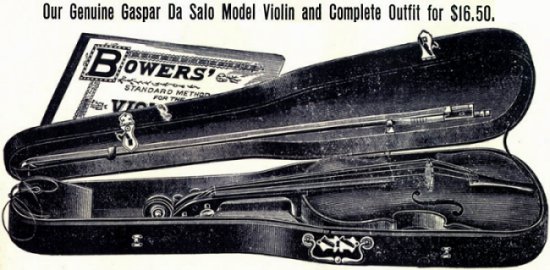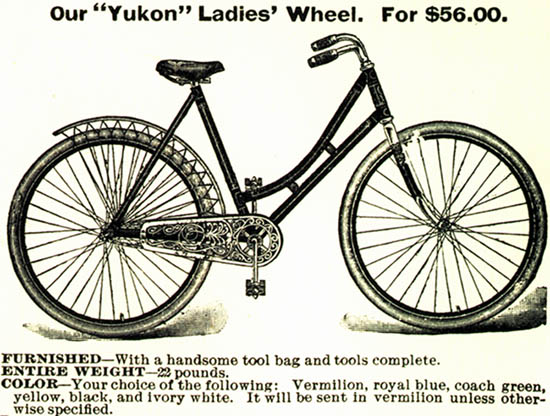1897 and 1909 Sears Catalogs
Today, old catalogs and buying power. The University of Houston's College of Engineering presents this series about the machines that make our civilization run, and the people whose ingenuity created them.
It's time for another visit to old Sears-Roebuck catalogs -- this time with an eye to how we lived a century ago. What do the dominant goods, and their prices, tell us about that world?
A dollar at the turn of the twentieth century bought more than twenty-dollars-worth of our 2006 goods. But goods also cost less to make now. So a wage earner would really have to pay over a hundred times as much for the same item that we buy today.
Let's look in the 1897 Sears-Roebuck Catalog to see what that means. In terms of a low-end wage-earner's buying power, a thirty-dollar, mail-order gold watch was comparable to our plasma TV screen. Buying a 175-dollar Columbus horse-carriage then, would feel like buying a low-end automobile now.
Without our audio systems, musical instruments loomed large. Sears sold organs, pianos, banjos, accordions, zithers and factory-made violins. A high-end piano (a so-called upright grand) went for 179 dollars. That same piano was only 138 dollars in 1909, and they threw in a "scholarship" for 92 lessons. Better manufacturing had stretched the value of a dollar, in that twelve-year period, more than the dollar had devalued.
Only a few violins appeared in 1897. By 1909, a vast industry of factory-made violins had grown up. They cost from four to twenty dollars but, instead of a scholarship, you got a book of instructions. The cheapest musical instrument in either catalog was the low-end "Jews' Harp". Its cost rose from five cents to eight cents between catalogs.
The new safety bicycles cost a substantial 25 to 56 dollars. When my parents bought my first bike from a mail-order catalog in the late '30s, it cost less than these. This was an item whose cost was dramatically reduced by mass-production -- reduced even faster than the dollar had inflated.
The most surprising section, in our day, is a huge one on firearms. Not only can you by every kind of shotgun, rifle, and hand gun, you can also buy, through the mail, a bewildering array of live ammo and even black powder. Of course these were more tools of subsistence than they were weapons or sporting equipment.
No typewriters in the earlier catalog. By 1909, there's one. It cost 23 dollars. Sewing machines were ten to twenty dollar items -- a thousand of our dollars for an essential household item. We find troves of china, factory-made clothing, hand tools, farm implements, patent medicines. The first item in the 1897 catalog is an 18-pound chest of tea. It costs only fifty-two cents. The last item is a sixty-cent cotton surcingle for a large horse.
The true fabric of history is the texture of a time. And I've just spent the day reading the most accurate history book of them all. This eight-hundred page cornucopia tells me what America was, a century ago, in a language that no other book could.
I'm John Lienhard, at the University of Houston, where we're interested in the way inventive minds work.
1897 Sears Roebuck Catalogue. intr. by S. J. Perelman and R. Rovere, (New York: Chelsea House Publishers, 1968). (Both images are from this source.)
Sears, Roebuck and Co. Incorporated: 1909 Catalog. (J. Feinman, ed.) (New York: Ventura Books, Inc., 1979).

